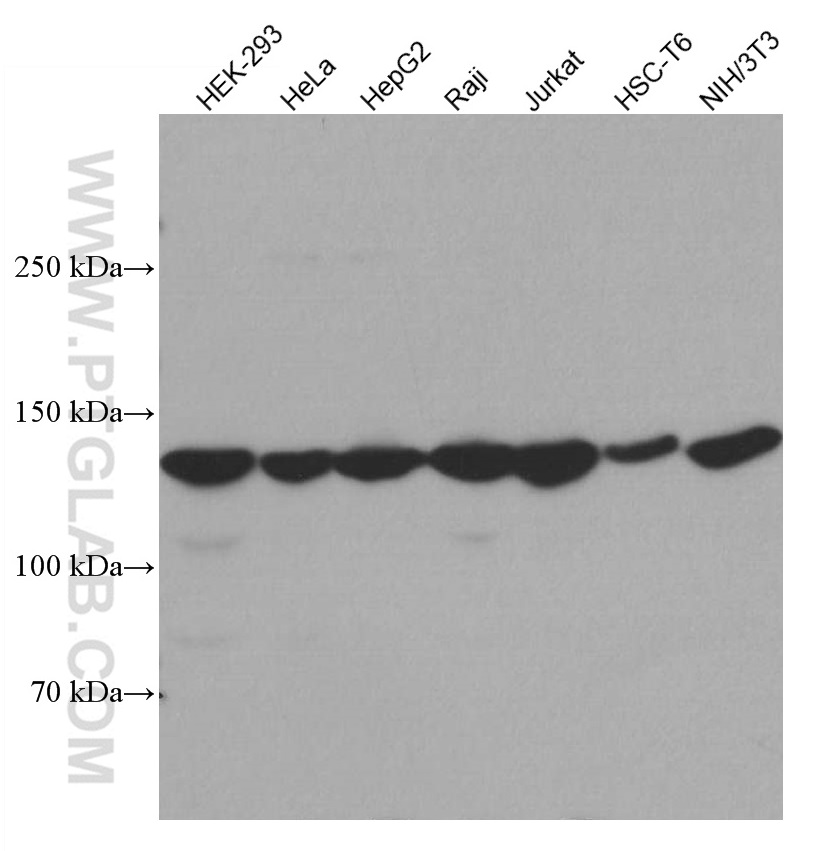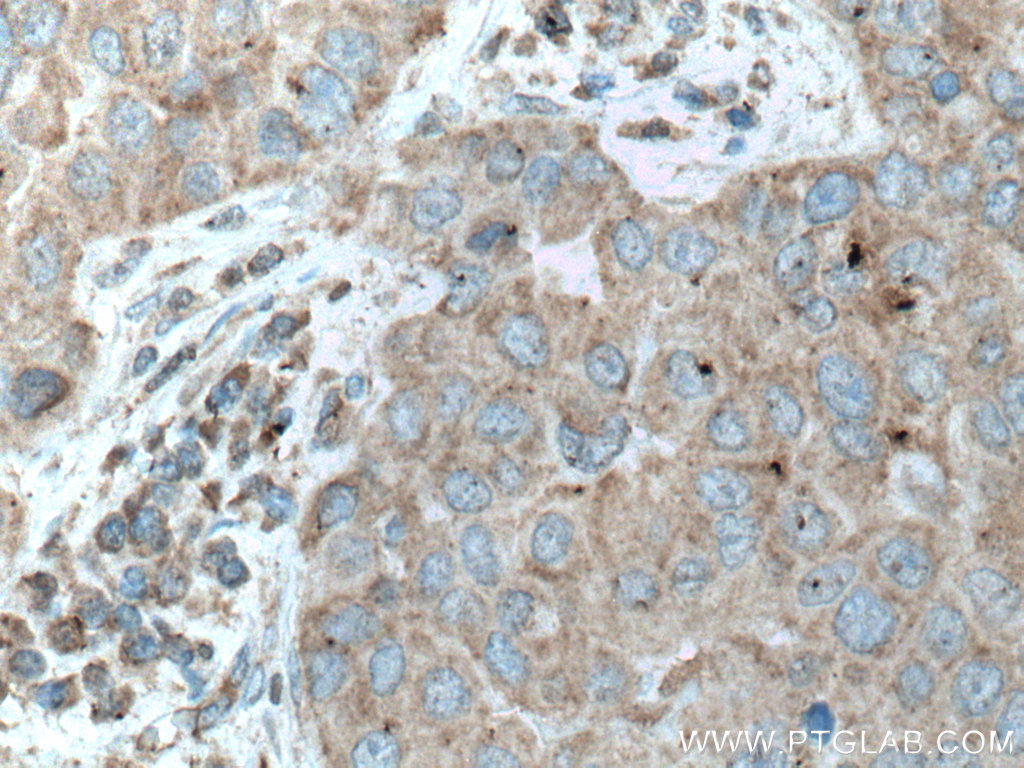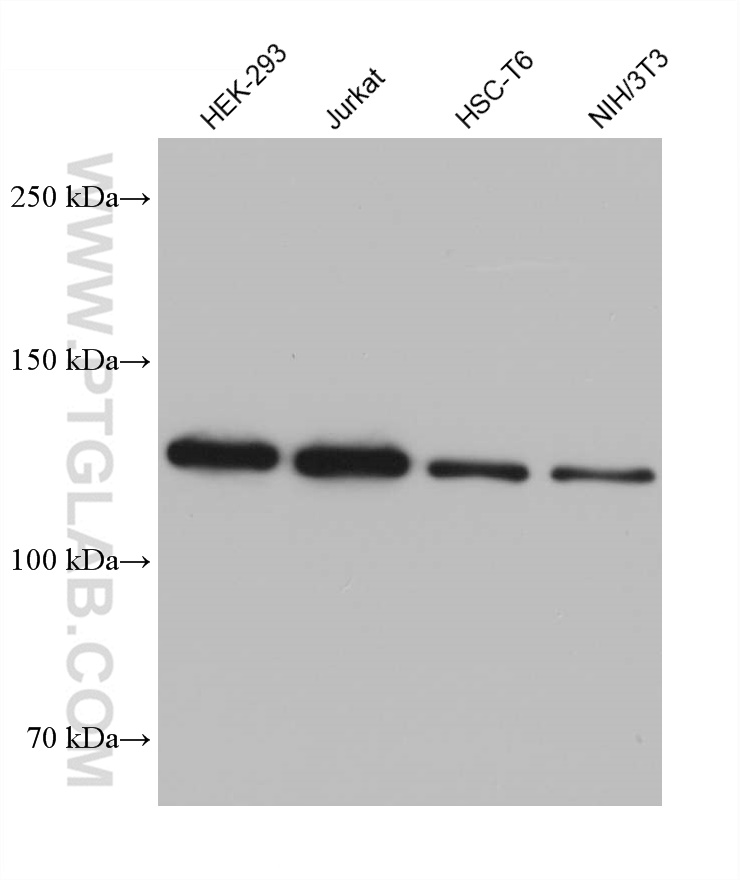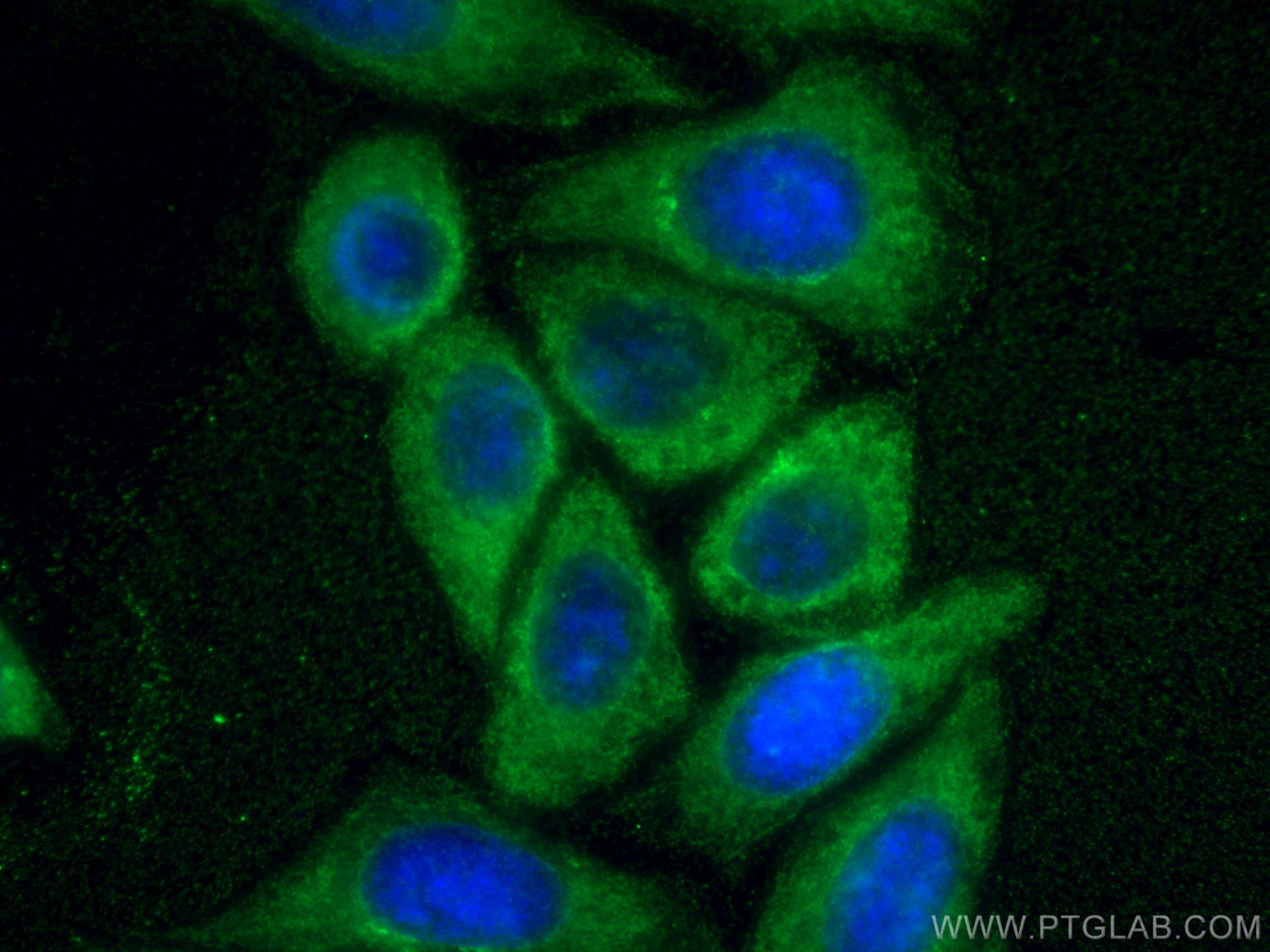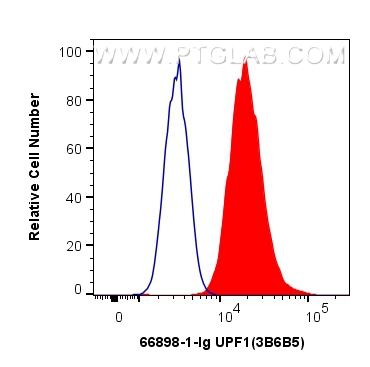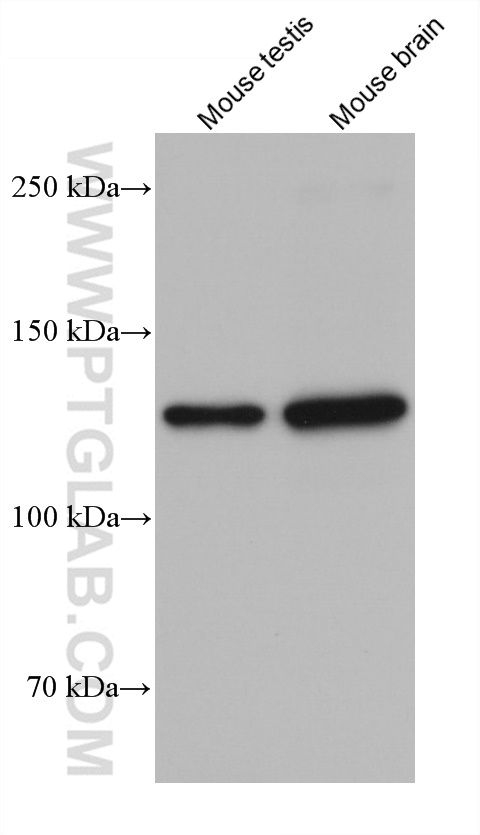验证数据展示
经过测试的应用
| Positive WB detected in | HEK-293 cells, mouse testis tissue, HeLa cells, HepG2 cells, Raji cells, Jurkat cells, HSC-T6 cells, NIH/3T3 cells, mouse brain tissue |
| Positive IHC detected in | human breast cancer tissue Note: suggested antigen retrieval with TE buffer pH 9.0; (*) Alternatively, antigen retrieval may be performed with citrate buffer pH 6.0 |
| Positive IF/ICC detected in | HepG2 cells |
| Positive FC (Intra) detected in | HepG2 cells |
推荐稀释比
| 应用 | 推荐稀释比 |
|---|---|
| Western Blot (WB) | WB : 1:3000-1:10000 |
| Immunohistochemistry (IHC) | IHC : 1:250-1:1000 |
| Immunofluorescence (IF)/ICC | IF/ICC : 1:400-1:1600 |
| Flow Cytometry (FC) (INTRA) | FC (INTRA) : 0.40 ug per 10^6 cells in a 100 µl suspension |
| It is recommended that this reagent should be titrated in each testing system to obtain optimal results. | |
| Sample-dependent, Check data in validation data gallery. | |
发表文章中的应用
| KD/KO | See 2 publications below |
| WB | See 6 publications below |
产品信息
66898-1-Ig targets UPF1 in WB, IHC, IF/ICC, FC (Intra), ELISA applications and shows reactivity with human, mouse, rat samples.
| 经测试应用 | WB, IHC, IF/ICC, FC (Intra), ELISA Application Description |
| 文献引用应用 | WB |
| 经测试反应性 | human, mouse, rat |
| 文献引用反应性 | human, mouse |
| 免疫原 | UPF1 fusion protein Ag28320 种属同源性预测 |
| 宿主/亚型 | Mouse / IgG1 |
| 抗体类别 | Monoclonal |
| 产品类型 | Antibody |
| 全称 | UPF1 regulator of nonsense transcripts homolog (yeast) |
| 别名 | RENT1, Regulator of nonsense transcripts 1, KIAA0221, EC:3.6.4.12, ATP-dependent helicase RENT1 |
| 计算分子量 | 123 kDa |
| 观测分子量 | 123-130 kDa |
| GenBank蛋白编号 | BC039817 |
| 基因名称 | UPF1 |
| Gene ID (NCBI) | 5976 |
| RRID | AB_2882227 |
| 偶联类型 | Unconjugated |
| 形式 | Liquid |
| 纯化方式 | Protein G purification |
| UNIPROT ID | Q92900 |
| 储存缓冲液 | PBS with 0.02% sodium azide and 50% glycerol , pH 7.3 |
| 储存条件 | Store at -20°C. Stable for one year after shipment. Aliquoting is unnecessary for -20oC storage. |
背景介绍
Up-Frameshift Suppressor 1 Homolog (UPF1) is the central factor in nonsense-mediated mRNA decay (NMD) and is also directly involved in telomere homeostasis, DNA replication, histone mRNA degradation and staufen-mediated mRNA decay (PMID: 29382845). It is a potential modulator of MALAT1 and that UPF1/MALAT1 pathway could be a therapeutic target for gastric cancer (PMID: 28942451). The molecular mass of UPF1 is 123-130 kDa.
实验方案
| Product Specific Protocols | |
|---|---|
| WB protocol for UPF1 antibody 66898-1-Ig | Download protocol |
| IHC protocol for UPF1 antibody 66898-1-Ig | Download protocol |
| IF protocol for UPF1 antibody 66898-1-Ig | Download protocol |
| Standard Protocols | |
|---|---|
| Click here to view our Standard Protocols |
发表文章
| Species | Application | Title |
|---|---|---|
J Neurosci Inhibition of Nonsense-Mediated Decay Induces Nociceptive Sensitization through Activation of the Integrated Stress Response | ||
Gene Prenatal diagnostic approaches diagnosed craniosynostosis and identified a novel nonsense variant in SMAD6 in a Chinese fetus | ||
Mol Med CircMAPK1 induces cell pyroptosis in sepsis-induced lung injury by mediating KDM2B mRNA decay to epigenetically regulate WNK1 | ||
Int J Med Sci LncRNA SNHG6 promotes proliferation, invasion and migration in colorectal cancer cells by activating TGF-β/Smad signaling pathway via targeting UPF1 and inducing EMT via regulation of ZEB1. | ||
Eur J Immunol The G allele of SNP rs3922 reduces the binding affinity between IGF2BP3 and CXCR5 correlating with a lower antibody production
| ||
J Cell Physiol Nonsense-mediated mRNA decay suppresses injury-induced muscle regeneration via inhibiting MyoD transcriptional activity
|
